MCQ ON DICOTYLEDONOUS AND MONOCOTYLEDONOUS ROOT / DICOTYLEDONOUS AND MONOCOTYLEDONOUS ROOT class 11 for NEET | DICOTYLEDONOUS AND MONOCOTYLEDONOUS ROOT class 11| MCQ ON DICOTYLEDONOUS AND MONOCOTYLEDONOUS ROOT with Answer | Check the below NCERT MCQ question for class 11Biology based on the with Answers.
MCQ on DICOTYLEDONOUS AND MONOCOTYLEDONOUS ROOT class 11Biology with answers were prepared based on the latest pattern.We have provided class 11 Biology MCQs question with Answers to help students understand the concept very well.
MCQ ON DICOTYLEDONOUS AND MONOCOTYLEDONOUS ROOT is useful for NEET / CSIR / UGC / CBSE / ICSE / AIIMS / EXAM / AFMC EXAM / STATE LEVEL MEDICAL EXAM/ KVS PGT BIOLOGY / NVS PGT BIOLOGY EXAM 2023-2024 ,2025
INTRODUCTION:-
DICOTYLEDONOUS AND MONOCOTYLEDONOUS ROOT :-
In the transverse section of the sunflower root of dicotyledonous root , the internal tissue organisation as follows :-
The outermost layer is epidermis. Many of the epidermal cells protrude in the form of unicellular root hairs.
The cortex consists of several layers of thin – walled parenchymatous cells with intercellular spaces. The innermost layer of a cortex is called endodermis.
It comprises a single layer of barrel – shaped cells without any intercellular spaces.
The tangential as well as radial walls of the endodermal cells have a deposition of water impermeable.
EPIDERMAL TISSUE SYSTEM :-
THE EPIDERMAL TISSUE SYSTEM forms the outermost covering of the whole plant body and comprises epidermal cells stomata and the epidermal appendages the trichomes and hairs.
The epidermis is the outermost layer of the primary plant body. It is made up of elongated compactly arranged cells which form a continuous layer. Epidermis is usually single layered. Epidermal cells are parenchymatous with a small amount of cytoplasm lining the cell
wall and a large vacuole.
The outside of the epidermis is often covered with a thick layer called the cuticle which prevents the loss of water.
Cuticle is absent in roots.
Stomata aur structures present in epidermis of the leaves.
Stomata regulate the process of transpiration and gases exchange. Each stoma composed of two bean shaped cells known as guard cells.
Guard cells possess chloroplast and regulate theopening and closing of stomata.
THE COMPLEX TISSUES ARE MADE OF MORE THAN ONE TYPE OF CELLS.
THIS WORK TOGETHER IS A UNIT.
Xylum and phloem constituent the complex tissues in plants.
. PHLOEM :- PHLOEM transports food materials, usually from leaves to other parts of the plants. Phloem in angiosperm is composed of Sieve tube elements, companian cells, phloem parenchyma, and phloem fibres.
Gymnosperms have albuminous cells and sieve cells .They lacks sieve tubes and companion cells.
Sieve tubes elements are also long tube like structures arranged longitudinally and are sieve – like manner to form the sieve plates.
Companion cells :- The companion cells are specialised parenchymatous cells which are closely associated with sieve tubes elements.
PHLOEM Parenchyma :- It is made up of elongated tapering cylindrical cells which have dense cytoplasm and nucleus.
PHLOEM fibers:- it is made up of sclerenchymatous cells.There are generally absent in the primary phloem but are found in the secondary phloem.
XYLEM:-
XYLEM FUNCTION is a conducting tissue for water and minerals from roots to the stem and leaves . It also provides mechanical strength to the plants.
It is composed of four different kinds of elements , tracheids, vessels, xylem fibres , xylem parenchyma.
Gymnosperms lacks vessels in their xylem.
Tracheids are elongated or tube like cells with thick and lignified walls and tapering ends.
These are dead and are without protoplasm.The inner layers of cell walls have thickening which vary in form.
Vessel is along cylindrical tube like structure made of many cells called vessels members each with lignified walls and a large central cavity.
Xylem fibers have highly thickened walls and obliterated central lumens.
XYLEM parenchyma cells are living and thin walled and their cell walls are made up of cellulose.
They store food materials in the form of starch or fat .
The cells of the permanent tissues do not generally divide further. Permanent tissue having all cells similar in structure and functions are called simple tissues.
Permanent tissues having many different types of cells are called complex tissues.
Simple tissues:-a simple tissue is made of only one type of cells. The various simple tissues in plants are parenchyma, collenchyma and Sclerenchyma.
Parenchyma forms the major component within organs. The cells of the parenchyma are generally isodiametric.
They may be spherical , oval , round ,polygonal or elongated in shape.
Their walls are thin and made of cellulose.
They may either be closely packed or have small intercellular spaces.
The Parenchyma performs various functions like photosynthesis storage and secretion.
Collenchyma:-the Collenchyma occurs in layers below the epidermis in dicotyledonous plants.
It is found either as a homogeneous layer or patches.It consist of cells which are much thickened at the corners due to deposition of cellulose , hemicellulose and pectin.
Sclerenchyma:- it consist of long narrow cells with thick and lignified cell walls having a few or numerous pits.They are usually dead and without protoplasts.
MCQ DICOTYLEDONOUS AND MONOCOTYLEDONOUS ROOT class 11 for NEET/KVS PGT BIOLOGY / NVS PGT BIOLOGY EXAM 2023-2024,2025
1.The outermost layer of dicotyledonous root is
(a) epidermis
(b) endodemis
(c) parenchyma
(d) collenchyma
Ans (a) epidemis
2. The composition of stele is
(a) tracheids, vessels , xylem parenchyma , xylem fibres
(b) pericycle, vascular bundles and pith.
(c) stomatal aperture , guard cells , subsidiary cells
(d) sieve tube elements , companion cells , phloem parenchyma and phloem fibres.
Ans. (b) pericycle , vascular bundles and pith.
3.Cambium is developed between ….
(a) albuminous cells
(b) cuticle
(c) xylem and phloem
(d) sieve tubes
Ans. (b) xylem and phloem
4. The parenchymatous cells which lie between the xylem and the phloem are called
(a) epidermis
(b) pericycle
(c) conjunctive tissue.
(d) leaf
Ans.(c) conjunctive tissue
5. Next to endodermis lies a few layers of thick – walled parenchymatous cells referred to as
(a) stomata
(b) pericycle
(c) epidermis
(d) sieve tubes elements
Ans.(b) pericycle
6. The tangential as well as radial walls of endodermal cells have a deposition of water impermeable waxy material suberin in the form of
(a) companion cells
(b) phloem fibres
(c) casparian strips
(d) phloem parenchyma
Ans.(c) casparian strips
7.The innermost layer of the cortex is called
(a) companion cells
(b) guard cells
(c) xylem fibers
(d) endodermis
Ans.(d) endodermis
8. Casparian strips is related to
(a) dumb – bell shaped
(b) xylem fibres
(c) endodermis
(d) circular shape
Ans.(c) endodermis
9. All tissues on the innerside of the endodermis such as pericycle , vascular bundles and pith constitute the
(a) parenchyma
(b) Collenchyma
(c) stele
(d) companion cells
Ans. (c) stele
10.The pith is small or inconspicuous in
(a) dicot root
(b) monocot root
(c) dicot stem
(d) monocot stem
Ans. (a) dicot root
11. lateral roots and vascular cambium during the secondary growth takes place in the cells
(a) parenchyma
(b) pericycle
(c) phloem parenchyma
(d) phloem
Ans.(b) pericycle
12. There are usually two to four xylem and phloem patches in
a) monocotyledonous root
b) dicotyledonous root
c) root hairs
(d) xylem parenchyma
Ans . (b) dicotyledonous root
13. In sunflower the root is found
(a) sclerenchymatous cells
(b) dicotyledonous
(c) monocotyledonous
(d) endarch
Ans.(b) dicotyledonous root
14.All the tissues on the……………………..such as pericycle , vascular bundles and pith constitute the stele.
(a) unicellular
(b) innerside of xylem
(c) multicellular
(d) parenchyma
Ans. (b) innerside of xylem
15.It comprises a single layer of barrel – shaped cells without any intercellular spaces.
(a) phloem fibres.
(b) endodermis
(c) Collenchyma
(d) Trichomes
Ans.(b) endodermis
ALSO READ:-
● YOU CAN WATCH BIOLOGY SIR Youtube channel
16. Pith is large and we’ll developed in
(a) dicotyledonous root
(b) parenchymatous cells
(c) monocotyledonous root
(d) protophloem
Ans.(c) monocotyledonous root

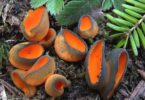
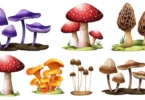
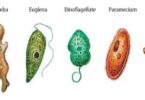
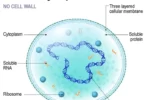
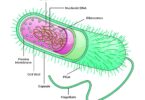
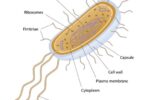
Leave a Comment